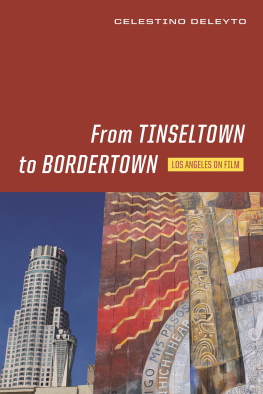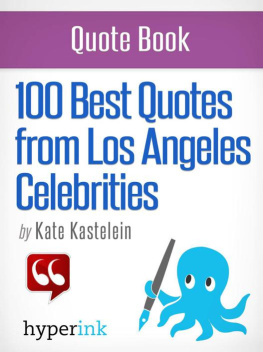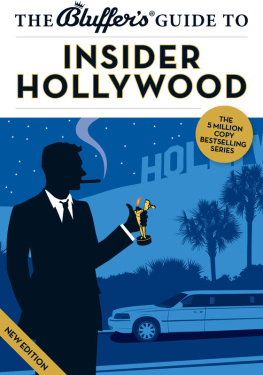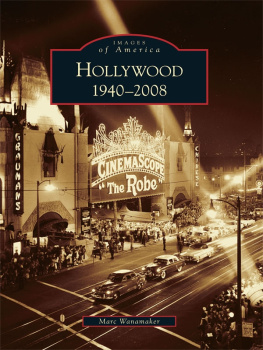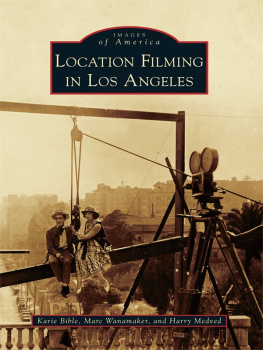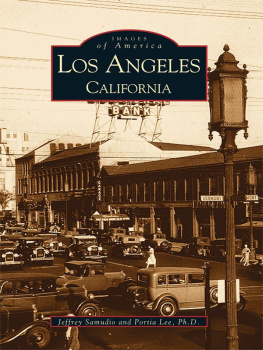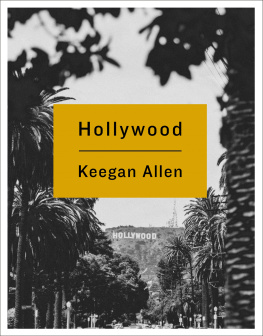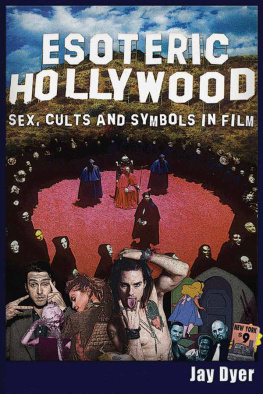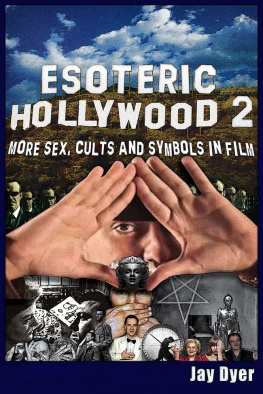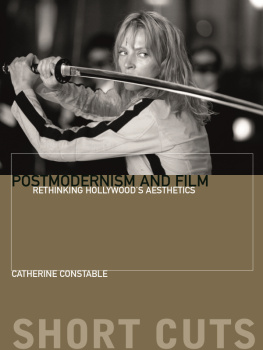Contemporary Approaches to Film and Media Series
A complete listing of the books in this series can be found online at wsupress.wayne.edu.
General Editor
Barry Keith Grant
Brock University
Advisory Editors
Robert J. Burgoyne
University of St. Andrews
Caren J. Deming
University of Arizona
Patricia B. Erens
School of the Art Institute of Chicago
Peter X. Feng
University of Delaware
Lucy Fischer
University of Pittsburgh
Frances Gateward
California State University, Northridge
Tom Gunning
University of Chicago
Thomas Leitch
University of Delaware
Walter Metz
Southern Illinois University

2016 by Wayne State University Press, Detroit, Michigan 48201. All rights reserved. No part of this book may be reproduced without formal permission. Manufactured in the United States of America.
Library of Cataloging Control Number: 2016959426
ISBN 978-0-8143-3985-5 (paperback) | ISBN 978-0-8143-3986-2 (ebook)

Wayne State University Press
Leonard N. Simons Building
4809 Woodward Avenue
Detroit, Michigan 482011309
Visit us online at wsupress.wayne.edu
For Alfonso Lpez-Baissn (19512016),
Who should have died hereafter
Contents
Acknowledgments
Research toward this book was financed by the Spanish Ministerio de Economa y Competitividad (research projects HUM2007-61183/FILO and FFI2010-15312) and by the Diputacin General de Aragn (Ref. H12). The University of Zaragoza partially funded two research stays at UCLA, where I was a visiting scholar in 2010 and 2012. During my two stays at UCLA, the Chicano Studies Research Center was my home. I would like to thank the CSRCs director, Professor Chon Noriega, for welcoming me to the Center and for his advice and encouragement. I am also indebted to Javier Iribarren, Michael Stone, Connie Heskett, and Darling Sianez for their help with practical matters and invaluable advice. Without the infrastructure, the resources, and the warmth of the CSRC, this book would not have seen the light of day.
My research was also carried out at the Charles E. Young Library at UCLA and at the Margaret Herrick Library in Beverly Hills. Susan Anderson, Mara Garca, Arlete Pichardo, and Jos Luis Valenzuela were my guides through various aspects of LA history, culture, and society. Much of what I have learned from them has found its way into this book. Susan also compiled an extremely useful reading list for me, which became the basis of my research on the city of Los Angeles, and she read and gave me most welcome advice on one of my chapters. I would also like to thank Jos Luis for giving me access to the Luminarias production papers and for his candid discussion of his work and Mexican life in the city.
Stephen Gyllenhaal and Kathleen Mann Gyllenhaal were kind enough to share their views on contemporary Hollywood with me. I am grateful to Rosa Urtiaga for letting me use her unpublished interview with Real Women Have Curves scriptwriter Josefina Lpez and to Ms. Lpez for allowing me to reproduce her views on the film. My very special thanks go to Kevin and Ascensin, the visible part of the iceberg of my many conversations with Angeleno citizens. Ignacio Deleyto helped me with the music in The Soloist, Hilaria Loyo gave me a useful bibliography on the concept of the American dream, Ivn Villarmea shared with me his research and some of his views on city films, and Jacline Moriceau offered me some references to urban theory. My very special thanks go to Francesc Terrades, who designed the maps of the city included in the book on very short notice and with considerable effort. I am particularly grateful to Gemma Lpez, who kindly read my manuscript, and to Marimar Azcona for her constant help and unflinching support and for always believing in what I do, even when I dont myself. At Wayne State University Press, Annie Martin was always at hand, offering all the encouragement and advice an author could possibly ask for, and more. Barry Grant, the series editor, not only believed in my project from the beginning but also contributed to turn it into a better book.
Finally, my greatest gratitude is, as ever, to Esther, Elena, and Anita, the three shining stars in my own private Tinseltown.
Introduction
The Exorbitant City
This book originates from my personal experience on first visiting Los Angeles in 2008. I stayed at a hotel in the Westwood area, and the first people I saw on the mostly deserted sidewalks of Sepulveda Boulevard were a group of Latinos sitting on a low wall, waiting for work, I suppose, mostly looking down as I walked by. A few hours later my wife and I went for dinner at nearby Norms, a traditional Angeleno diner. Inside we were immediately entranced by the vibrancy of the place and the ethnic makeup of both patrons and workers; many of the customers were Latino, and so were most of the waiters, as were practically all the busboys and even the restaurant manager, at least on that particular day. We soon noticed that they were not all the same in terms of social class; there were categories and divisions between them, probably some Mexican Americans and others recent arrivals from Mexico or other Latin American countries. Some spoke Spanish, others English, most of them a mixture of both; some acted more American than others, but they all blended into the complex social dynamic of the place, which included people from many other ethnic origins, although in smaller proportions. In the following days (and years), we returned to Norms several times. As our fascination with the city grew, the restaurant remained for us a powerful microcosm of the city, because our ensuing experiences of LA at large did nothing but confirm our first impression.

Norms on Pico Boulevard.
What was that first impression? That for such movie aficionados and Hollywood film lovers as we are and after seeing Los Angeles in hundreds of films past and present over more than four decades, LA seemed to us an almost completely new city. This was while we stayed on the Westside and before we hit Broadway, the Grand Central Market, La Placita, and Olvera Street and before even hearing of Boyle Heights, Lincoln Heights, and all the other neighborhoods east of the Los Angeles River. Maybe LA had been different in the past but, because we had mostly avoided the freeways during that first stay, there was little we could see that we could relate to the cinematic city we were familiar with. That city was dominated by cops and gangsters, alienated heroes and smart teen heroines, Hollywood stars and fancy automobiles speeding, in recent decades, along wide and generally not too busy freeways. Of course we noticed the street signs, such as the familiar Sunset Boulevard, and we walked along the utterly unexceptional Hollywood Boulevard, visited the studios, and saw the Hollywood sign, but after a few days in the city all of these seemed relatively unimportant to LAs urban identity, or, rather, identities. Maybe Venice, Santa Monica, and Malibu were slightly more recognizable, but even in these traditional beach communities peoples skin seemed a notch or two browner than in the movies, and not just because of the sun.
It was this discrepancy that first encouraged me to delve deeper into the two terms of my puzzling equation: the city and the movies. As a citizen of Spain, I was and continue to be particularly sensitive to the pervasive Spanish names and sounds of the city, to its pulsating Latino culture and communal habits, but also to what became an obsession and a paradox: the striking invisibility of Mexicans and other Latinos and Latinas on many economic, social, and political levels, given their overwhelming numbers. The movies had prepared me well for this invisibility. Contemporary films in particular seemed remarkably adept at hiding what to me soon became one of the foremost features of Los Angeles: its Mexicanness. I discovered that LA is in many ways a particular kind of Mexican city, but, at the same time, it is much more than that. It is a city characterized by a staggering diversity and by a simultaneous tendency, in many of its dominant discourses, to erase such diversity. In fact, the dynamic between visibility and erasure and its attendant fears, anxieties, and hopes came to define for me the shape of Angeleno history, politics, and social interactions. At the same time, the cinema, both classical and contemporary, could be considered a particularly powerful instrument in the construction of discourses of erasure and concomitant celebration ofto me nonexistenthomogeneity.
Next page
